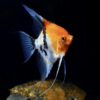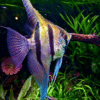To provide the best experiences, we use technologies like cookies to store and/or access device information. Consenting to these technologies will allow us to process data such as browsing behaviour or unique IDs on this site. Not consenting or withdrawing consent, may adversely affect certain features and functions.
The technical storage or access is strictly necessary for the legitimate purpose of enabling the use of a specific service explicitly requested by the subscriber or user, or for the sole purpose of carrying out the transmission of a communication over an electronic communications network.
The technical storage or access is necessary for the legitimate purpose of storing preferences that are not requested by the subscriber or user.
The technical storage or access that is used exclusively for statistical purposes.
The technical storage or access that is used exclusively for anonymous statistical purposes. Without a subpoena, voluntary compliance on the part of your Internet Service Provider, or additional records from a third party, information stored or retrieved for this purpose alone cannot usually be used to identify you.
The technical storage or access is required to create user profiles to send advertising, or to track the user on a website or across several websites for similar marketing purposes.
Assorted Colour Vampire Crab Geosesarma Sp 2-3Cm 1 × £8.71
Red Devil Vampire Crab - Geosesarma Hagen - Decapod Crustacean 1 × £8.71

 Assorted Colour Vampire Crab Geosesarma Sp 2-3Cm
Assorted Colour Vampire Crab Geosesarma Sp 2-3Cm  Red Devil Vampire Crab - Geosesarma Hagen - Decapod Crustacean
Red Devil Vampire Crab - Geosesarma Hagen - Decapod Crustacean 
















Emily Carter (verified owner) –
I recently added a Platinum White Angelfish to my 55-gallon tropical fish tank, and I couldn’t be more thrilled! This beautiful fish has not only enhanced the aesthetic of my aquarium but also seems to thrive in its environment. After about two weeks of careful acclimation, my new angelfish is already showing off its stunning pearlescent features and graceful movements. I love watching it interact with my other fish; it has a calm demeanor that complements my community tank perfectly.
Compared to other angelfish I’ve kept, the Platinum White stands out with its vibrant coloration and unique patterns. The quality of this fish is evident—it’s healthy, active, and swimming confidently through the tank. My only minor concern was the initial shipping; while it arrived in good condition, I recommend double-checking the water temperature during transit to ensure your new fish stays comfortable.
Overall, I highly recommend this angelfish for anyone looking to add a touch of elegance to their aquarium. Whether you’re a seasoned aquarist or a beginner, this beautiful fish will bring joy and life to your setup. Just be sure to provide plenty of space and a varied diet, and you’ll have a happy, healthy fish for years to come!
Emily Carter (verified owner) –
I recently added the Platinum White Angelfish to my aquarium, and I couldn’t be happier! After just two weeks, I noticed a remarkable change in my tank’s aesthetics. These Pterophyllum Scalare are not only stunning with their shimmering silver hues, but they also have such a graceful swimming style that captivates anyone who looks at my aquarium.
I’ve kept fish for over five years, and I know how crucial it is to choose the right species for a well-cared aquarium. These angelfish thrive in a spacious environment and maintain a peaceful demeanor, making them perfect companions with my other freshwater fish.
Compared to other cichlids I’ve owned, these Platinum Whites have been more resilient and less aggressive, which has made my experience much more enjoyable. I did have a small concern about their compatibility with other fish; they should ideally be housed with similar-sized species to avoid any territorial issues.
If you’re looking to enhance your freshwater setup, I highly recommend these beauties! They require a bit of care, but the joy they bring is well worth it. They shipped quickly and arrived healthy, which is always a plus.
Happy fishkeeping!